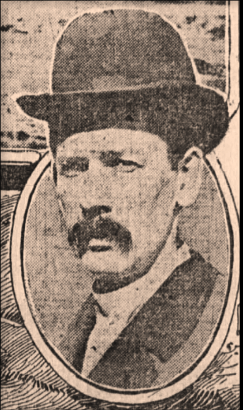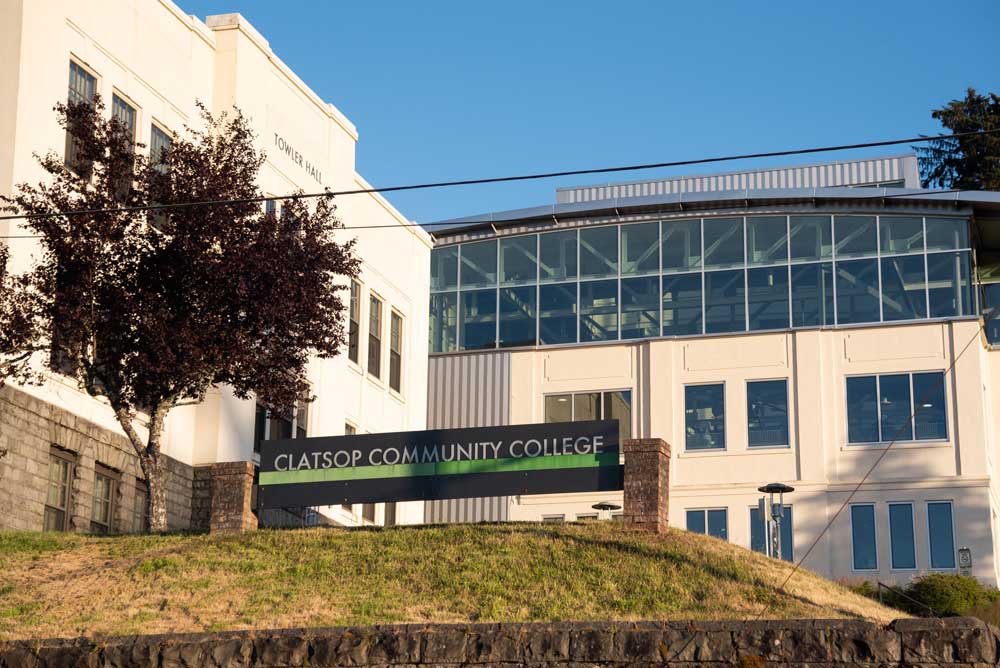Weekend Break: The search for the lost SS Rosecrans seamen
Published 1:00 pm Friday, November 19, 2021

- SS Rosecrans Capt. Lucian Field Johnson was known as an ambitious and popular skipper.
In the early 20th century, Capt. Lucian Field Johnson’s reputation preceded him.
Trending
A U.S. Navy veteran with several years experience on the deck of an oil tanker, Johnson earned the title of captain at the young age of 29. The region knew him as an ambitious and popular skipper.
But his shining reputation wouldn’t outlast him. Up until recently, his full name — along with the names of 34 other fallen sailors — had been lost to history decades after a fatal shipwreck near Cape Disappointment. They went down with the SS Rosecrans in 1913, when it foundered on Peacock Spit.
The victims’ identities were recovered by local historian and Clatsop County Genealogical Society genealogist Mel Bashore.
Trending
A man on a mission
Bashore dug into the story of the Rosecrans shipwreck as part of a lecture he delivered for the genealogical society earlier this year. He is a longtime historian who retired to Hammond after a 38-year career in the history department of The Church of Jesus Christ of Latter-day Saints.
“A lot of times, the names in the newspapers are F. Smith or J. Johnson. … There are a lot of J. Johnsons and a lot of F. Smiths, so who are these (people)?” Bashore asked. “That’s where the tricky part comes in, to unearth who these people were, to fully identify them.”
Bashore chose to focus his lecture on the Rosecrans because it had a “nice tidy list” of all the last names and first initials of the men who were on the ship during its final venture, making it easier to begin fully identifying them.
The ‘Jinx Ship’
For most of its commission as an oil tanker, the Rosecrans performed well. It could carry as many as 18,000 barrels of crude oil in a single trip, and it frequented a route from San Francisco to Portland.
But the ship’s fortunes changed in 1912, when it foundered on the rocks near Santa Barbara. Not long after the Rosecrans was repaired, an oil fire gutted the interior of the ship.
Though owners would repair the ship once more, it quickly gained the name “Jinx Ship,” because of its poor luck.
Still, the popular Capt. Johnson managed to round up 37 men to run the ship in 1913.
The first trip from San Francisco to Portland was successful. The second was fraught with bad weather.
According to Bashore, the Rosecrans sailed through 60 mph winds and breakers as high as a house. Visibility was low, and the helmsman failed to see the lightship that would have guided them safely into the Columbia River.
Instead, the Rosecrans continued north until it reached the North Head Lighthouse near Ilwaco. The crew mistook the lighthouse for the lightship, turning the vessel into land.
“The next thing the crew knew … they were crashed up against Peacock Spit,” Bashore said. “It was just chaos. And the captain said — and this was the big mistake — he said drop our anchors.”
Those anchors kept the ship too far from the shore, and rescue boats were unable to reach it to save the crew members. In the meantime, the ship was “getting beat to death against Peacock Spit,” Bashore said. About three hours into the wreck, the Rosecrans broke in two.
A tragedy without answers
Some crew members jumped overboard, though most drowned in the process. In total, 34 men died in the shipwreck, but only six bodies were ever recovered.
“We have cemeteries here on land, but there are so many that have died and are out in the deep still. Their bodies have never been recovered,” Bashore said. “For me, this was kind of a search for lost seamen.”
The 16 men he was able to fully identify included messman Angus MacDonald, electrician John Milton Elletson, third assistant engineer Norman Fife and chief engineer Richard M. Grundell. Bashore’s research uncovered details about the men’s lives prior to their time on the Rosecrans.
What’s next?
Since wrapping up his research on the Rosecrans, Bashore has turned his attention to other areas of study. He joked that he is “footloose and fancy free” with his research, drawn to investigate anything that piques his interest.
“I’m not one who focuses on a certain thing,” he said. “I am all over the map. I guess I’m kind of a Renaissance person. … The world is just so rich and interesting.”
He is writing up his research of a snake oil “elixir” he found advertised in several Maryland newspapers, as well as finishing articles for three regional publications about more local topics.
Though he does not specialize in shipwreck history, Bashore said learning about the Rosecrans and its crew gave him an opportunity to discover more about his new home on the Oregon Coast.
‘Shipwrecks at the mouth of the Columbia’
clatsopcountygensoc.com
Click on the ‘meetings/calendar’ tab
“This was kind of like dabbing my big toe into what has gone on here before. … It helps me feel a part of where I now live, by looking at what has happened here before I got here.”








